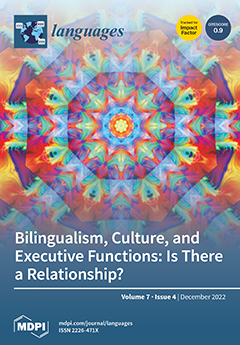In this paper, we consider mood selection in embedded clauses by focusing on a German-based minority language, Cimbrian, which is spoken in a northern Italian enclave. Mood selection in Cimbrian relies on the presence of two different complementizers,
az and
ke (the latter
[...] Read more.
In this paper, we consider mood selection in embedded clauses by focusing on a German-based minority language, Cimbrian, which is spoken in a northern Italian enclave. Mood selection in Cimbrian relies on the presence of two different complementizers,
az and
ke (the latter being borrowed from Romance varieties), each of which selectively require a specific mood.
Az selects the mood subjunctive in modal sentences introduced by non-factive verbs, whereas
ke co-occurs with the indicative in purely declarative clauses introduced by factive and semi-factive verbs. However, this binary distribution is challenged in the two following contexts, and it is precisely at this point that feature borrowing comes into play: (i) with the verb
gloam ‘to believe/to think’, the expected binary pattern appears (irrealis
az + subjunctive and the realis
ke + indicative), but, crucially, a third construction emerges, namely
ke + subj.; (ii) surprisingly,
az + subj. displays some ‘gaps’ in its paradigm, specifically in the first person, which appeared in the data we collected via translation tasks from Italian into Cimbrian. Both phenomena shed light on how language contact works, not in terms of structural borrowing but rather in terms of the transfer of the specific features of a given lexical item.
Full article





